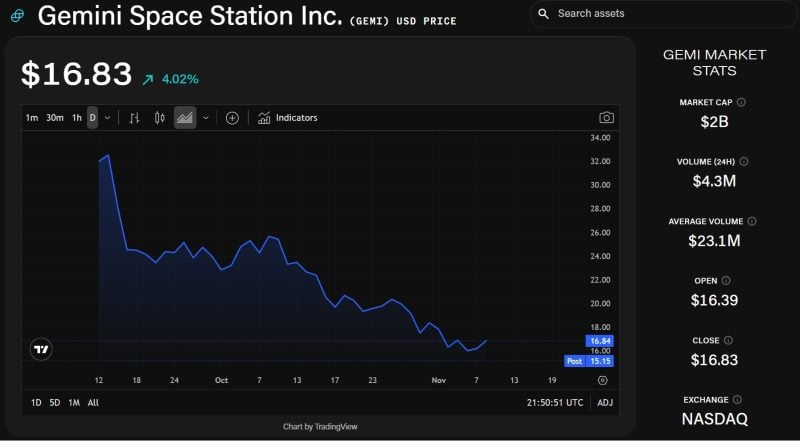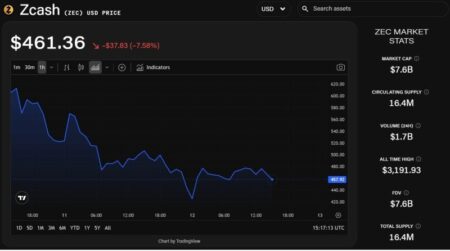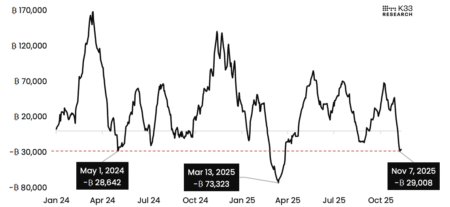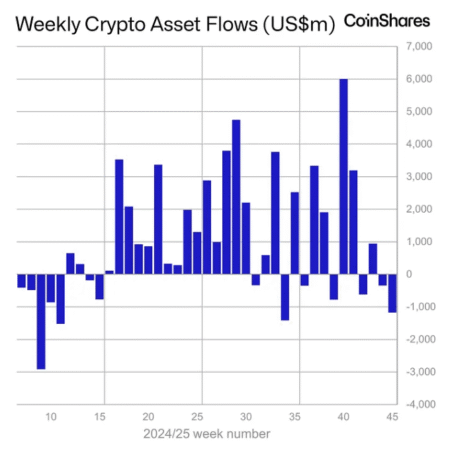Gemini’s Q3 Report: A Mixed Bag of Growth and Challenges
Gemini, the cryptocurrency exchange co-founded by the Winklevoss twins, recently released its first quarterly results since going public in September. The report revealed a significant 52% increase in revenue compared to the previous quarter, as trading activity rebounded, buoyed by the introduction of new products such as its innovative credit card and staking services. These developments aimed to diversify the company’s revenue streams, which were overshadowed by higher IPO-related expenditures.
In the third quarter, Gemini’s net revenue reached almost $50 million, propelled chiefly by transaction fees exceeding $26 million and service revenues near $20 million. The impressive performance of the Gemini credit card was a notable highlight, alongside the strong expansion of its institutional staking services. Even with this uptick in revenue, the company still faced a net loss of $159.5 million or roughly $6.67 per share. This loss largely stemmed from stock-based compensation and extensive marketing activities related to its initial public offering, which strained its adjusted EBITDA, landing at a negative $52.4 million.
Trading volumes illustrated a healthy growth trajectory as well, reaching $16.4 billion—an increase of 45% from the prior quarter. Institutional trading saw a remarkable surge, climbing nearly 50%, indicating renewed confidence among larger investors. This spike in trading activity could be attributed to the broader market recovery in the cryptocurrency space, which has encouraged participants to take advantage of current opportunities.
To further enhance its service offerings, Gemini introduced a self-custody wallet, expanding its capabilities in an increasingly competitive market. Additionally, the company made strides into international markets, securing a MiCA license in Europe and launching operations in Australia. These strategic moves not only expand Gemini’s regulatory footprint but also allow the company to tap into new customer bases across the globe.
The Gemini credit card has gained momentum rapidly, surpassing 100,000 open accounts and accumulating over $350 million in spending—effectively doubling its performance from the previous quarter. Moreover, staking balances on the platform rose to $741 million, underscoring the growing importance of services revenue, which now constitutes nearly 40% of total income, compared to less than 30% a year earlier. The company anticipates full-year services and interest revenue to hit between $60 to $70 million, with expectations for continued growth spurred by its credit card and staking products.
Despite the promising topline performance, investors reacted negatively in after-hours trading, with GEMI shares plummeting over 11%, dipping below $15 to register a new all-time low. Investor sentiment turned cautious as they focused on the widening losses and the hefty costs associated with the IPO, overshadowing the improvements in trading volumes and service offerings.
In conclusion, while Gemini’s report for Q3 highlights a rebound in revenue and strong product performance, the lingering losses and IPO-related expenses create concerns for investors. As the company continues its quest for growth and market expansion, keeping a close eye on profitability will be crucial.
















